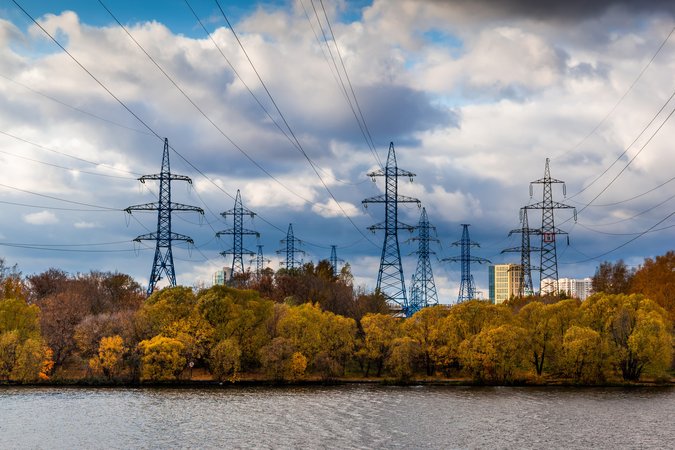New Study Finds That Complementary Policies Can Reduce Costs While Accelerating Emissions Reductions
A new report released today by the Clean Energy Buyers Institute (CEBI) and Resources for the Future (RFF) estimates the effects of five policy pathways that would complement the clean electricity incentives in the recently passed Inflation Reduction Act (IRA). The Pathways toward Grid Decarbonization: Impact and Opportunities for Energy Customers from Several US Decarbonization Approaches report finds that while each policy pathway is impactful, three of the policy pathways accelerate greenhouse gas (GHG) emission reductions while also reducing costs:
- A national high-capacity transmission macrogrid would reduce national average retail electric rates by approximately 1 percent while reducing US power-sector GHG emissions an estimated 2.6 percent by 2050.
- Expansion of competition among electricity generators via organized wholesale electricity market (OWM) expansion would save $11 billion annually by 2035 and $14 billion annually by 2050 and reduce national power-sector GHG emissions an estimated 8 percent by 2035.
- Expansion of electricity supply choice for commercial and industrial customers would reduce emissions a further 2 percent beyond the reduction achieved by expanding OWMs.
“Recently passed landmark legislation has the potential to drive unprecedented demand for clean energy and incentivize customers to continue to play a key role in accelerating its uptake,” said Bryn Baker, Senior Director of Market and Policy Innovation at the Clean Energy Buyers Institute (CEBI). “This report shows that expanding organized markets and transmission, in particular, will be critical to unlocking the IRA’s incentives by directly addressing barriers to bringing clean energy projects to market, reducing customer costs and opening more avenues for customers to be the demand-side drivers of clean energy.”
“Energy customers have faced many challenges in accessing clean energy, and our research indicates that transmission investments and electricity market expansion have significant potential to save money, save lives, and reduce climate change, at the same time. That’s like the pharmacist handing you a wad of cash with your prescription,” said RFF Fellow Daniel Shawhan, lead author of the report. “Furthermore, our research indicates that transmission expansion is even more valuable since the passage of the IRA, to allow the clean generation incentivized by the Act to come from low-cost sites.”
“Our analysis indicates that combining organized wholesale electricity market expansion and a transmission macrogrid would likely save more than enough money to fully offset the cost of doubling non-emitting generation in the United States, to about 80 percent of total generation,” said Shawhan.
While transmission investments, electricity market expansion, and supply choice expansion can provide billions of dollars of annual net benefits, they alone are insufficient to drive deep decarbonization. The other two policies assessed in the study—utility-led decarbonization and clean electricity standards—have stronger potential for that, locally or nationally.
Policy-by-Policy Findings
Based on detailed modeling of the policies, compared to outcomes in the same years in a reference scenario with none of the policies, the report’s findings indicate:
More policy-specific findings, such as a policy’s associated retail cost savings and projected clean energy generation, can be found in the Summary for Policymakers and the full report.
Unlocking Customer Demand
Transmission and organized market expansion, in particular, directly address several challenges slowing clean energy deployment and greater utilization of IRA investments. Transmission allows projects to connect to the grid and move power, and well-functioning, organized wholesale markets reduce production costs for all customers, provide a level playing field to integrate clean energy projects, and serve as a platform through which customers can more efficiently buy and sell clean energy.
Access the Summary for Policymakers or full report, Pathways toward Grid Decarbonization: Impacts and Opportunities for Energy Customers from Several US Decarbonization Approaches using the link in the report title.
Daniel Shawhan, Steven Witkin, and Christoph Funke of RFF conducted and wrote the study. CEBI and RFF funded the study.
***
The Clean Energy Buyers Institute (CEBI) is a 501c3 public charity that solves the toughest market and policy barriers to achieve a carbon-free energy system. CEBI’s aspiration is to achieve a 90% carbon-free U.S. electricity system by 2030 and a global community of customers driving clean energy. Visit cebi.org for more information.
Resources for the Future (RFF) is an independent, nonprofit research institution in Washington, DC. Its mission is to improve environmental, energy, and natural resource decisions through impartial economic research and policy engagement. RFF is committed to being the most widely trusted source of research insights and policy solutions leading to a healthy environment and a thriving economy.
Unless otherwise stated, the views expressed here are those of the individual authors and may differ from those of other RFF experts, its officers, or its directors. RFF does not take positions on specific legislative proposals.
For more information, please see our media resources page or contact Media Relations and Communications Manager Annie Tastet.




